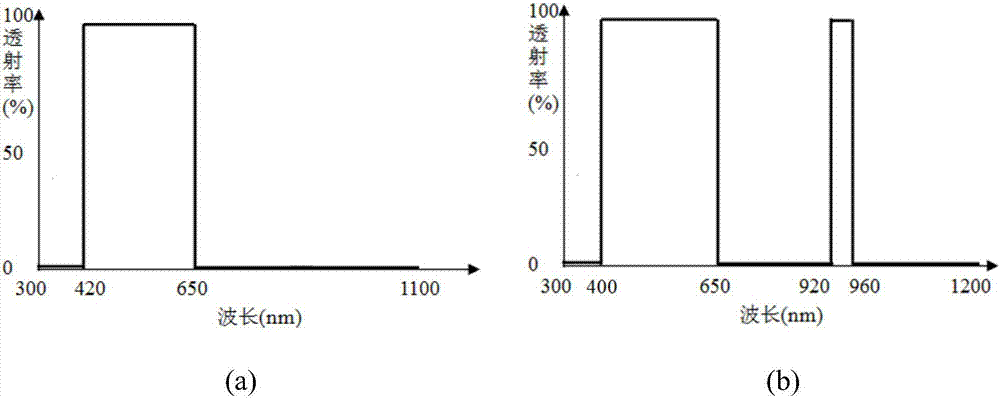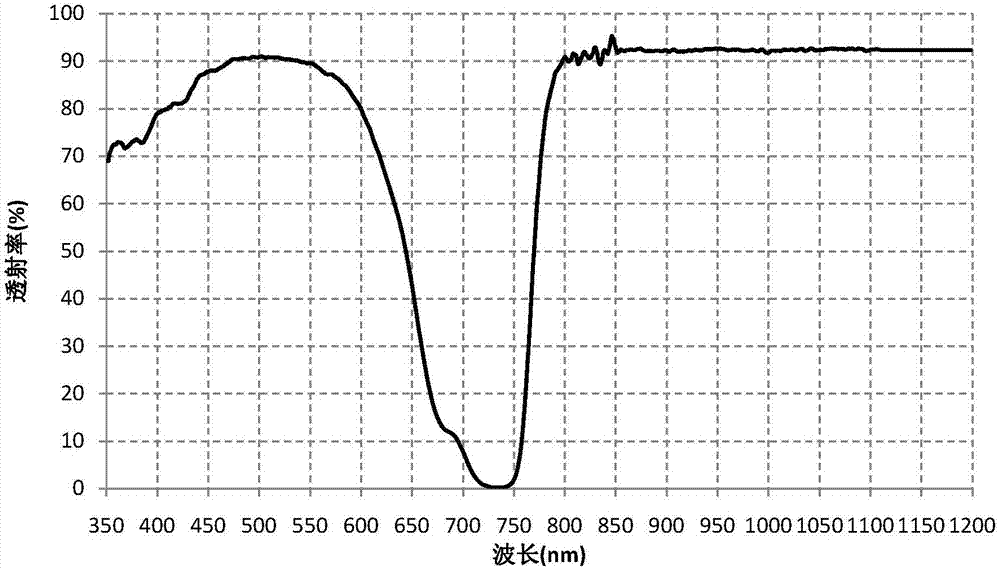Dual-channel filter and method for preparing dual-channel filter by spin-coating blue dye
A dual-channel filter and blue dye technology, which is applied in the field of dual-channel filters and spin-coated blue dyes to prepare dual-channel filters, can solve the problem of poor rigidity of blue plastic substrates, substrate deformation, and inability to use dual-channel filters And other issues
- Summary
- Abstract
- Description
- Claims
- Application Information
AI Technical Summary
Problems solved by technology
Method used
Image
Examples
Embodiment Construction
[0054] figure 1 is a schematic diagram of comparing the optical characteristics of a single-channel filter and a dual-channel filter, where (a) is the optical characteristic of the single-channel filter, and (b) is the optical characteristic of the dual-channel filter. The general requirements of a single-channel filter are as follows: transmit visible light at 420-650nm, and cut off near-infrared light at 700-1100nm. Dual-channel filters generally require the following characteristics: transmit 400-650nm visible light and 940nm (or 850nm) infrared light, and cut off 700-1200nm infrared light except for the 940nm (or 850nm) passband. The important differences between the two filters are: (1) from a single channel that transmits 420-650nm to a dual-channel that transmits 400-650nm and 940nm (or 850nm). Purpose, wherein the visible light channel obtains color images, and the infrared light channel obtains black and white images; (2) The visible light transmission band is extend...
PUM
 Login to View More
Login to View More Abstract
Description
Claims
Application Information
 Login to View More
Login to View More - R&D
- Intellectual Property
- Life Sciences
- Materials
- Tech Scout
- Unparalleled Data Quality
- Higher Quality Content
- 60% Fewer Hallucinations
Browse by: Latest US Patents, China's latest patents, Technical Efficacy Thesaurus, Application Domain, Technology Topic, Popular Technical Reports.
© 2025 PatSnap. All rights reserved.Legal|Privacy policy|Modern Slavery Act Transparency Statement|Sitemap|About US| Contact US: help@patsnap.com



